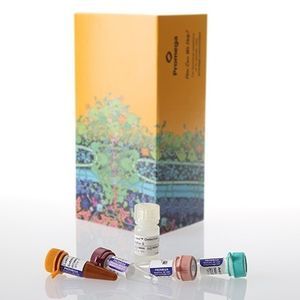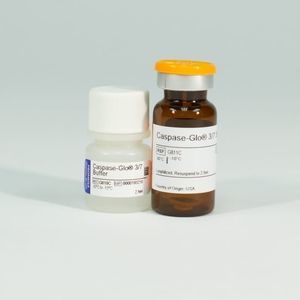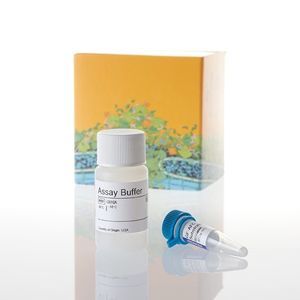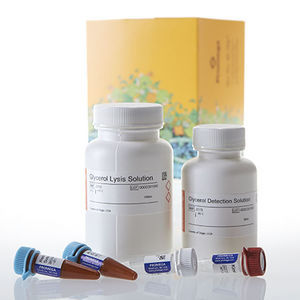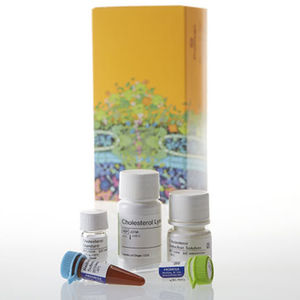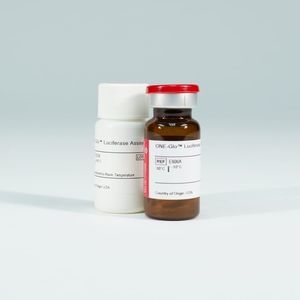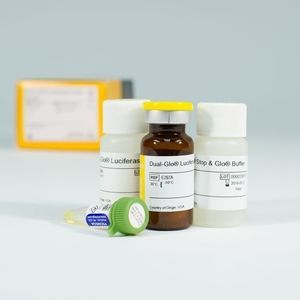
- Laboratory
- Laboratory medicine
- Serum reagent
- Promega France
Serum reagent kit Triglyceride-Glo™tissuephosphatelipase
Add to favorites
Compare this product
Characteristics
- Type
- serum
- Applications
- tissue
- Tested parameter
- phosphate, lipase, glycerol, ATP, triglycerides
- Method
- enzymatic
- Storage temperature
-65 °C
(-85 °F)
Description
Works with lysed cells, tissues, medium and serum samples
No organic extraction, extreme heat or centrifugation required
Linear triglyceride detection up to 80µM
Rapid and Sensitive Triglyceride Detection in Biological Samples
The Triglyceride-Glo™ Assay is a bioluminescent assay for rapid and sensitive measurement of triglycerides in cultured cell lysates and other biological samples, such as cell culture medium, serum and tissue homogenates. The assay is ideal for measuring triglyceride accumulation and clearance in normal and pathological conditions. Examples include adipocytes, liver samples or cell culture liver models where excess triglyceride accumulation causes steatosis, an early hallmark of nonalcoholic fatty liver disease (NAFLD) and nonalcoholic steatohepatitis (NASH).
How the Assay Works
The Triglyceride-Glo™ Assay detects triglyceride levels by measuring glycerol that is released from an enzymatic reaction with a lipase: one mole of glycerol per mole of triglyceride. Glycerol is measured in a coupled reaction scheme that links the production of NADH to the activation of a proluciferin that produces light with luciferase. The amount of triglyceride is determined from the difference of glycerol measured in the absence (free glycerol) and presence (total glycerol) of lipase. Lipase converts triglyceride (TAG) to glycerol. Glycerol kinase and glycerol-3-phosphate dehydrogenase are used to generate NADH. In the presence of NADH, Reductase enzymatically reduces a proluciferin Reductase Substrate to luciferin. Luciferin is detected in a luciferase reaction using Ultra-Glo™ Luciferase and ATP,
Catalogs
No catalogs are available for this product.
See all of Promega France‘s catalogsRelated Searches
- Assay kit
- Solution reagent kit
- Molecular biology reagent kit
- Immunoassay assay kit
- Research reagent kit
- Protein reagent kit
- Laboratory reagent kit
- Enzyme reagent kit
- Histology reagent kit
- Optical assay kit
- Reagent medium reagent kit
- Immunology reagent
- Dye reagent
- Antibody
- Buffer solution reagent kit
- Fluorescence assay kit
- PCR reagent kit
- Bacteria reagent kit
- Research assay kit
- Blood sample reagent kit
*Prices are pre-tax. They exclude delivery charges and customs duties and do not include additional charges for installation or activation options. Prices are indicative only and may vary by country, with changes to the cost of raw materials and exchange rates.


